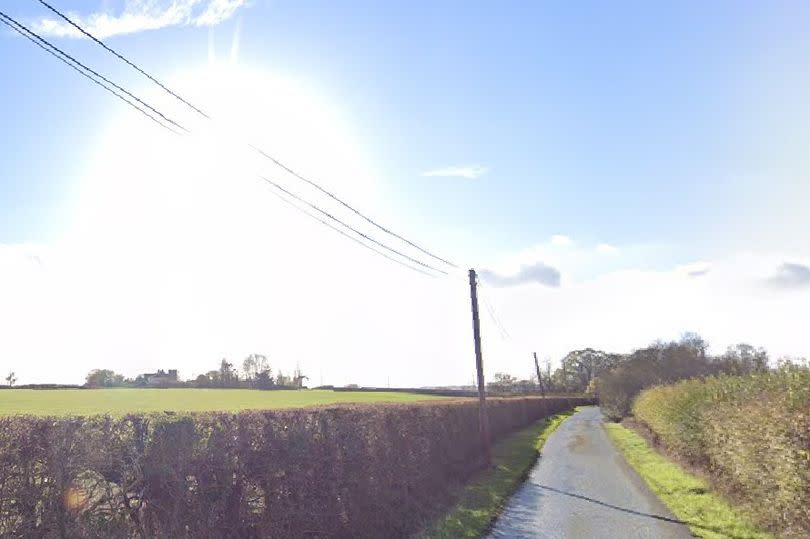The tiny Essex village a German Zeppelin crashed in on its way back from bombing London

One of the most-feared threats of the First World War ending up crashing in a tiny Essex village. The conflict saw British civilians coming under attack from the air for the first time.
The German military used Zeppelins - giant airships that could turn off their engines and drift silently through the skies to launch surprise attacks. Named for their inventor, Count Ferdinand von Zeppelin, the cigar-shaped aircraft were filled with gas and could fly long distances to drop bombs on their targets.
In total, there were 51 Zeppelin raids on Britain during the war, with 564 people killed and another 1,354 injured. The majority of the raids happened in 1915 and 1916, with half in London - and it was following one bombing raid on the capital that a Zeppelin had an unexpected landing in Essex.
Read next: Award-winning Essex park once home to monastery destroyed by King Henry VIII
Read next: The abandoned Essex train station destroyed by fire now a community centre
Airship L33 had bombed London and was returning to Germany on the night of September 24, 1916 when it was hit by an anti-aircraft shell. The Essex Record Office says the crew jettisoned everything they could as the ship lost height over Mersea Island.
It said items found strewn across the fields over the next few days included "a machine gun, two cases of machine gun cartridges, and maps". According to Mersea Museum, local resident Fred Mallett was playing with his brother when they found papers in a ditch. His father dried them in front of the fire and the papers were sent up to the authorities, turning out to be from the log book of the German airship.
The huge 650ft craft ended up crash landing on a country lane near Little Wigborough Church and New Hall Cottages in Little Wigborough. The captain of the airship, Alois Bocker, decided to set the Zeppelin on fire to prevent it getting into British hands.
It's said that he attempted to warn those living in a cottage nearby, but the terrified occupants refused to open the door. Bocker and his crew then reportedly headed up the road towards Peldon, encountering Special Constable Edgar Nicholas along the way.
An Essex Police History Notebook by Inspector Martyn Lockwood records the events as follows: "Bocker in perfect English asked him how many miles it was to Colchester. Nicholas replied, "About six". He was thanked by Bocker and Nicholas in his subsequent report on the incident stated that he at once recognised a foreign accent.
"The Germans continued their march followed by Nicholas. As they approached Peldon they were joined by Special Constable Elijah Traylor and Sergeant Ernest Edwards from Hatfield Board Oak, who was enjoying a few days rest in the area.
"The men considered their next move and eventually decided to escort the Germans to Peldon Post Office where they found the local constable, Pc 354 Charles Smith, who was busy trying to contact the military garrison at Colchester Pc Smith appears to have taken charge of the situation and formally arrested the German crew.
"Bocker asked Smith if he might use the telephone but the request was politely refused and he was told to march his men towards Mersea Island so they could be handed over to the military."
Essex Record Office holds several eyewitness accounts of the night, including a letter written by 40-year-old Rose Luard, who lived in nearby Birch. Describing the "thrilling" night the L33 landed, she recalled that most of the household dashed from window to window to see the drama unfolding.
She said it was a "vast monster, lying in its naked framework of girders, across 2 fields & a land between them". She added that it resembled a "gigantic antediluvian reptile of sorts, with its nose posed in the air".
Mersea Museum says the occupants of the cottages near where the L33 landed survived the inferno when the Zeppelin was set on fire. The one fatality of the night was Alfred Wright from Grove Farm, who saw what happening and attempted to ride his motorcycle to Mersea to alert the military - sadly crashing on the way there.
The museum says the wreckage site soon attracted many visitors: "The early visitors found it easy to get souvenirs but the site was soon guarded by the military and later visitors had to content themselves with buying mementoes fashioned from pieces of metal, most of which came from the Zeppelin."
While the dramatic events unfolded on a country lane, a baby girl was born at nearby Abbots Hall Cottages, Wigborough to a Mr and Mrs Clark and was given a quite unforgettable name. The museum says she was "delivered by Doctor Salter of Tolleshunt Darcy and at his suggestion was christened Zeppelina".
A plaque in her memory in Little Wigborough's St Nicholas Church - which was closed a few years ago on safety grounds - marked her date of birth and her death in 2004, at the age of 88. It also included a mention of L33 as a nod to her unusual moniker.
On the same night the L33 landed in Essex another Zeppelin, L32, crashed in flames in Great Burstead, killing all on board.
Get more What's On news from EssexLive straight to your inbox for FREE

 Yahoo News
Yahoo News 
